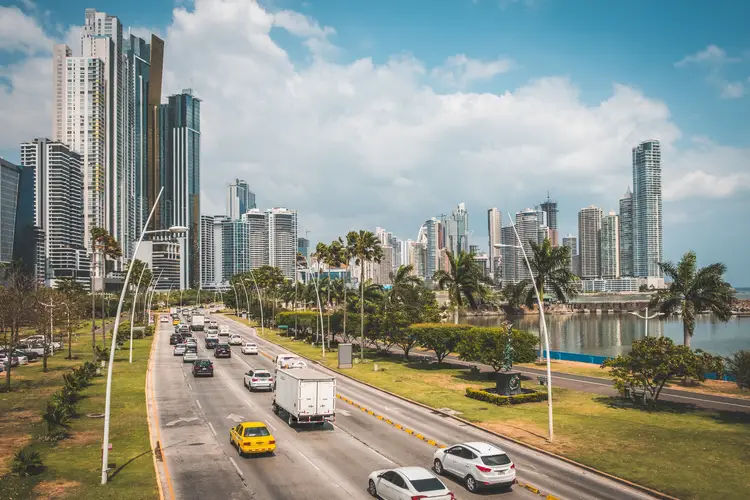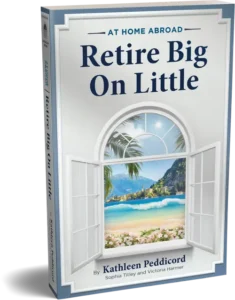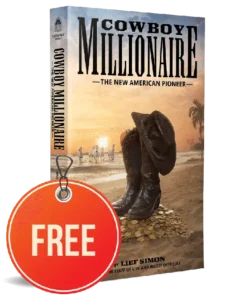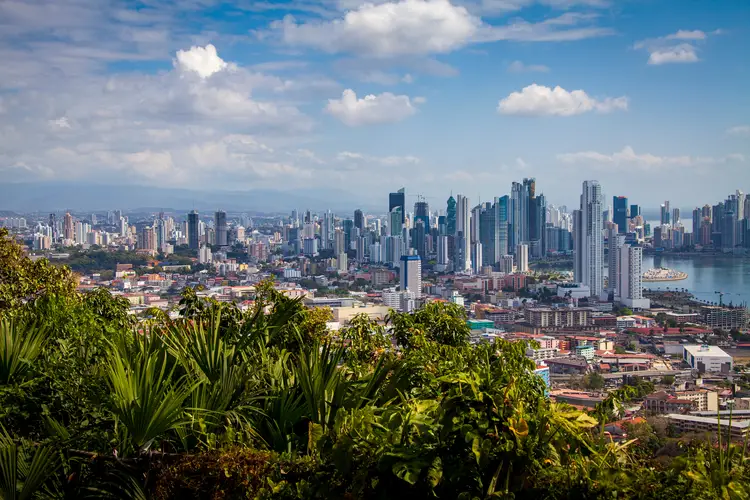Exploring Boquete: Panama’s Premier Retirement Haven
Nestled in the verdant highlands of Panama’s Chiriquí Province, Boquete is a small town with a big reputation. This charming...
Top Destinations:
Whether you’re looking for fun and sun, a peaceful retirement, or the chance to earn some extra income, you’ve got a real world of opportunity open to you… In short, we’ve done our best to narrow down your best options, but only you can decide the right country for you.
Best For:
How Much Will It Cost You To Live Overseas?
The only honest answer is, we have no idea. And neither does anyone else. The only one who can answer that question is you. Here’s the most important thing to understand about budgeting your new life overseas…
Follow Us:
Join our Weekly Newsletter
Overseas Property Alert
Sign up for our weekly newsletter to receive expert insights on the best international real estate investment opportunities.
Upcoming Events
Access France Workshop
International Property Summit
Caribbean Virtual Conference
VIRTUAL
May 15, 2025
PANAMA CITY, PANAMA
June 18-20, 2025
VIRTUAL
July 17-19, 2025
Contact Our Events Team
Reach us with your questions by email at: events@liveandinvestoverseas.com
Unlock The World
Overseas Havens Reports
Conference Kits
Lahardan Books
Our Customer Service team is here to assist with any questions or concerns CustomerService@LiveandInvestOverseas.com
Top Destinations:
Whether you’re looking for fun and sun, a peaceful retirement, or the chance to earn some extra income, you’ve got a real world of opportunity open to you… In short, we’ve done our best to narrow down your best options, but only you can decide the right country for you.
Best For:
How Much Will It Cost You To Live Overseas?
The only honest answer is, we have no idea. And neither does anyone else. The only one who can answer that question is you. Here’s the most important thing to understand about budgeting your new life overseas…
Follow Us:
Join our Weekly Newsletter
Overseas Property Alert
Sign up for our weekly newsletter to receive expert insights on the best international real estate investment opportunities.
Upcoming Events
Access France Workshop
International Property Summit
Caribbean Virtual Conference
VIRTUAL
May 15, 2025
PANAMA CITY, PANAMA
June 18-20, 2025
VIRTUAL
July 17-19, 2025
Contact Our Events Team
Reach us with your questions by email at: events@liveandinvestoverseas.com
Unlock The World
Overseas Havens Reports
Conference Kits
Lahardan Books
Our Customer Service team is here to assist with any questions or concerns CustomerService@LiveandInvestOverseas.com
LIVE AND INVEST IN PANAMA

WORLD’S #1 RETIREMENT HAVEN
IN THE AMERICAS
We Value Your Privacy! We will not share your email address with anyone else, period.
Home » Best Countries To Live, Invest, And Retire Overseas » Panama: Everything You Need To Know In 2025 » Living In Panama
Guide on living in Panama which includes where to live, cost of living, and the pros and cons of life in Panama.
Learn more about Panama and other countries in our free, daily Overseas Opportunity Letter, plus our In Focus: Panama newsletter Simply enter your email address below and we’ll send you our FREE REPORT: Panama: The #1 Retirement Haven In The Americas

It’s not only the Panama City skyline that has been transformed over the past 25 years… it’s also the size and makeup of the Panama City population.
A city of about 1 million in 1996, the Panama City metropolitan area is home to nearly twice that population today.
More people, more high-rise apartments housing those people, more cars (a lot more cars), more shopping malls, restaurants, hotels, fitness centers, furniture stores, casinos, bars, pubs, gentleman’s clubs, strip joints, schools, health clinics, grocery stores, fast-food franchises, real estate agencies, liquor stores, delis, dry cleaners… and on and on and on…
You can get anything you might want in Panama City today. Every product and service imaginable is available in this boom town.

Reviewed By Kathleen Peddicord
Kathleen is the Live and Invest Overseas Founding Publisher. She has more than 30 years of hands-on experience traveling, living, and buying property around the world.



Start Your New Overseas Life Today
A world full of fun, adventure, and profit awaits! Sign up for our free daily e-letter, Overseas Opportunity Letter, and we’ll send you a FREE report on the 10 Best Places To Retire In Style Overseas Today 2024
We Value Your Privacy! We will not share your email address with anyone else, period.
Beware the sidewalks can be hazardous and watch where you are going. There are uneven surfaces, tree roots, and the occasional uncovered manhole to contend with. Also, beware the patches of grass by the side of the road are littered with dog poop. Avoid stepping on the grass at all times.
You will need to get used to paying much more for your favorite American foods or learn to live without them. If your favorite produce is not benefiting your health, then use your relocation to Panama as a chance to start living more healthily.
At the weekend half of the population of Panama City leave and head to the countryside. The time they return is late afternoon and early evening on Sunday. Try to avoid traveling back to Panama City at this time as the roads will be busy.
Cars are expensive in Panama. If you are living in the countryside you might not be able to get by without one. Second-hand cars are more expensive than the U.S. and no guarantees to the quality of the vehicle. You are unlikely to find a full-service history buying a used car. Importing is also expensive.
Thankfully, once you have a car expenses are reasonable. Insurance is cheap and gas is around the same price as in the U.S. which may seem cheap if you are from Europe. The driving in Panama City is as wild and diverse as the rainforest.
Expecting other motorists to always be on the verge of a crazy un-signaled maneuver will save you a lot of stress and likely a lot of money in car repairs.
Something which can take people by surprise living in Panama is the short days and long nights. Being near the equator, the sun sets around 6:30 every night.
In many countries, hot weather is associated with longer nights and the early darkness must be taken into account. This means there are no winter nights where it is dark at 4:30 in the afternoon.
Living in Panama you may be pleased to find lots of English speaking media available to you. The radio station Cool FM has an English speaking breakfast DJ and a few other DJs who speak English.
Lots of cable channels have English language films, sports, and TV shows. Going to the cinema is also in English with Spanish subtitles.
Plus, there are also English language theatre productions and musicals as well as a number of tribute acts and live music events.
Panama has a lot of interesting alcohol to sample and enjoy. Seco is a Panamanian drink which is similar to rum. It can be bought in the supermarket for about $7 per liter.
Rum is also cheap in Panama. The national rum is called Ron Abuelo and sells at around $8 per liter. Bacardi and other rums also retail at a similar price.
For instance, Panama has a growing beer industry and produces lots of craft beers. The national beers are well priced and ideal for the climate being low in ABV% and enjoyable served ice cold. Supermarkets also stock an array of imported beers and lagers.
A decent selection of wine is available in most supermarkets at a low price. Naturally enough, wines from Chile and Argentina are better value than European wines.
Surprisingly a lot of wines from the U.S. are less expensive in Panama. Be warned though wine does not keep long in the heat of Panama!
Get Your Free Panama Report Today!
Simply enter your email address below and we'll send you our FREE REPORT - Live And Invest In Panama: The #1 Retirement Haven In The Americas.
There is a lot to love about living in Panama. Most people who have been living here for a while can reel off a long list of things they enjoy about life in this tropical country.
One of the notable benefits of living in Panama is the excellent, affordable health care. The health-care in Panama is some of the best in the world and the prices are some of the most competitive. People now fly to Panama specifically to make use of the medical and dental treatments.
Living in Panama has a particular benefit for U.S. citizen, the currency. U.S. dollars are legal tender here and the Panama Balboa is pegged to the dollar at a rate of 1:1. Having no currency exchange risk is a big factor in why many U.S. citizens choose to live in Panama.
Panama has generous tax incentives to encourage foreigners to live in Panama. Residents do not pay any tax on foreign earned income. This means your pension cannot be taxed and nor can any other funds set up outside of Panama.
Expats can buy and own property in Panama with the same rights and protections as Panamanian citizens. Be aware of a couple of location restrictions regarding beach property. Only Panamanians can own property which is within 25 meters of the high tide line at the beach.
If you are looking to start a business in Panama you will be given tax breaks from the government. Tourism investments have exemptions from import duties, construction materials and equipment. Exemptions are also applied to income and real estate taxes. Panama is actively looking to improve its economy and will assist you in your efforts.
Panama is a safe country to live in. Most Panamanians are friendly especially in the rural areas. Generally, Panamanians are not money orientated and not resentful of expats who are perceived as being wealthier. Armed policemen are a common sight in Panama City and tourist areas in particular, are very safe. A dedicated tourist police patrol these areas and are able to converse in English with visitors. Muggings and burglaries are the most common crimes for expats to beware of. You can minimize your exposure to these crimes with care and attention.
Panama is politically stable. Panama has had its share of political problems in the past but nowadays things are more secure.
Despite suffering its share of the corruption which exists through Latin America, Panama has a progressive outlook in many aspects of politics.
For instance, Panama has had a Female President and also has a well-established democratic system.
Panama has a modern communications network. Internet speeds in Panama City are fast and reliable and most expat areas also have stable connections.
In Panama City, you can drink the tap water. As well as saving you money on bottled water you can also make your own ice. You can also get ice with your drinks at bars and restaurants without worrying about contaminated water. Tap water is not safe to drink in the countryside.
Panama City enables you to live here car-free. While you will probably need a car in most parts of the interior (countryside) in Panama City it is not necessary. This can provide a huge savings.
Also, Panama City has a cheap public transport for its residents. The metro system is the only one of its kind in Central America. It is modern, air-conditioned and journeys cost 35 cents (less for retirees).
The buses are even cheaper and cover all areas of the city. Taxis are also cheap and plentiful. And, if you are looking to travel further afield buses from Albrook Mall can get you nearly anywhere in Panama.
Living in Panama means warm weather year round. Some of the mountainous areas are cooler but if you are around sea level, chances are you will not need a jumper during the daytime and only occasionally at night.
And, if you are looking for somewhere to live to escape from the worst of the winter weather in the U.S. then Panama is perfect.
The Panamanian summer starts mid-December and runs through to April. You can spend summer in Panama and return to the U.S. in time for their spring and summer.
The Panamanian lifestyle is far healthier than the U.S. lifestyle. People here eat more fresh fruit and vegetables and less fast food. The food here also comes with fewer preservatives and e numbers.
Panamanian fast food does exist but it is generally rice, meat, and lentils. You can buy U.S. chain fast food in the big cities if you ever fancy some though. Panama is not as car-oriented as the U.S. you will find yourself walking more, even if you decide to keep your car.
Living in Panama means you will be moving to a country with lots of fellow expats. You will find a number of areas with strong expat regions. Here you will find people to socialize with who will help you acclimatize to your new life.
Also, living in an expat region brings with it the benefit of having services aimed at expats. You can find restaurants, shops, and businesses all providing goods for expats.
Living in Panama you will either grow to love or hate the way of life. The culture is infinitely more relaxed than the U.S. and the people are noticeably less stressed. They don’t get annoyed about trivial things and love to party and celebrate when things go well.
Most iportantly, living in Panama you will either embrace this attitude and reap the benefits, or be unable to and leave.
Get Your Free Panama Report Today!
Simply enter your email address below and we'll send you our FREE REPORT - Live And Invest In Panama: The #1 Retirement Haven In The Americas.
The rainy season in Panama can be tough. During the rainy season, it will rain almost every day. The humidity on some days will be close to 100%.
Combined with high temperatures it can make walking to the shops a sweat-laden ordeal. It can take at least 10 minutes in an air-conditioned room plus an ice cold drink to return your body temperature to normal. If you don’t like living in air-conditioned rooms you will also not like life in most of Panama (Chiriquí apart). Traffic in the rainy season is worse than usual.
Flash floods can cause havoc on the roads and cause major traffic jams. On the plus side the rainy season a lush green to the grasses and plants.
Living in Panama City the traffic is relentless. Taxis are the worst culprits and it pays to always assume they are about to do something crazy. Although traffic in the countryside is generally better the roads into and out of Panama City are also prone to long traffic jams at peak times.
Life in a Panamanian neighborhood might not be to everyone’s tastes. Panamanians like to sit outside at the weekends and play loud music until the very early hours. There are lots of stray dogs who roam the streets and are tolerated by everybody.
Panama and Latin America have what is known as a mañana culture. Although literally mañana translates to tomorrow, what it means is not today. Service people will turn up when it suits them, if at all.
Ins short, customer service is not a thing here. You will get served at the speed the worker wants to operate at, which is invariably slower than you are used to or hoping for. Complaining makes absolutely no difference and is of no help. This slow culture goes from supermarket checkouts to government paperwork, banking and into every aspect of Panamanian life.
Water and power outages are not uncommon in Panama. Apartment buildings normally have backup water and a generator to protect you from the worst. The water companies will sometimes warn you before the water goes, but other times it will be unexpected. If you can’t live without hot water you may find life in Panama
is not to your tastes. Hot water is not standard here, although the cold water is warm. Power outages also occur more than in the U.S. If you live in the countryside these faults can take longer to fix and a backup supply is recommended. You will need surge protectors for all electrical products in certain areas.
Finding work in Panama can be difficult. This is not going to be a concern for everybody wanting to live in Panama, but it is worth mentioning. Panama has a catch-22 policy for foreigners wanting work. Most companies won’t employ you without a permit to work here, but you can’t get a permit to work here without a job. If you do have a job offer before you arrive, do your homework and make sure it is a reputable company before you arrive.
If you don’t speak Spanish you will find living in Panama can be difficult. While it is possible to get by in Panama City and Boquete without speaking Spanish it is not recommended. If you live anywhere else then speaking Spanish is a must. Without it you will not be able to make friends and will find yourself getting more and more annoyed at everyday encounters. Taxi drivers for example, will often look to take advantage of you if you don’t speak Spanish.
The culture shock of living in Panama can be difficult. Culture shock can hit you in any country and you need to be prepared for it. If you don’t make the necessary adjustments and know what to expect when you move you might find yourself heading back sooner than you anticipated.
Get Your Free Panama Report Today!
Simply enter your email address below and we'll send you our FREE REPORT - Live And Invest In Panama: The #1 Retirement Haven In The Americas.

When we were planning for our move from Paris to Panama City three-and-a-half years ago, Lief and I had to make a choice:
We knew Panama City well enough to understand that, while it may be small, Panama’s capital is eclectic. Different neighborhoods offer very different ways of life.
I wanted Casco Viejo, the old quarter, where, centuries ago, the Spanish and then the French hung their hats when they were in town. I like old buildings the way some women like new shoes, and the Casco, as it’s known today, boasts one of the world’s finest collections of Spanish- and French-colonial structures, plus shaded plazas and parks and ocean views in every direction.
It’s one of the few areas of this city made for walking. In most of the rest of Panama City, you have no choice but to brave the chaotic traffic.
In Casco Viejo, you can wander from plaza to plaza, from café to café, at your own pace, as you might in a European city. That appeals to me.
Lief, on the other hand, wanted to be based in the center of new Panama City, in or near the banking district, where the infrastructure we knew we’d need to launch our new business would be most easily tapped into.
Living in the heart of the new Panama City, though, meant living in a high-rise apartment tower. The thought of that appealed to me not at all.
In the end, I acquiesced. Lief was right, at least for the short term. Better to be based where the infrastructure would be more developed and most reliable. Otherwise, we’d be creating, perhaps, unnecessary business challenges for ourselves during this getting-started phase.
We found and rented an apartment in a brand-new tower in Punta Paitilla, on Calle Winston Churchill, that became our home for our first year in Panama City.
It was a good first step. In Paitilla, you’re very nearby two of the city’s biggest malls, as well as two of its most expat-friendly grocery stores (Riba Smith and the kosher Deli K) and what has become my favorite furniture store in the country.
A few blocks from our apartment also was a pharmacy, a dry cleaner’s, a hardware store, a pet shop, and a small greengrocer, plus a movie theater, a bowling alley, a budget-level hotel where visiting friends and family could stay, a higher-end hotel, and the Hard Rock Café. All these nearby resources made our adjustment period (including, and importantly, furnishing our new digs) easier to navigate.
As Lief had predicted, life in Paitilla was comfortable and convenient. From this central base, during our year in residence, we were able to explore the city, get our bearings, and figure our next, longer-term move.
This first apartment was rented (rather than acquired), because, while we agreed that Paitilla made good sense as a first step, we were both pretty sure it wasn’t where we wanted to be based in Panama City long term. We were right.
The reasons, though, why we decided that Paitilla didn’t suit us long term, were less to do with Paitilla than to do with high-rise living. Paitilla we liked. This neighborhood is not only convenient and user-friendly, but it’s also one of the greener parts of Panama City, with a large park overlooking the Bay of Panama where Jack could play catch with his dad and ride his skateboard with his friends.
As well, Paitilla is a residential zone. You find the grocery stores and other shops I’ve mentioned, but no office towers or government buildings. While much of the rest of the heart of Panama City is clearly open for business, Paitilla remains an enclave reserved for families. You see children riding their bicycles and nannies pushing their charges around in strollers, not businessmen in suits rushing from meeting to meeting, as you do in Marbella, say.
Paitilla is one of Panama City’s most established neighborhoods, a place where the upper-middle class has been raising its children for generations. Today, 20- and 30-something Panamanians with the resources to afford it prefer Costa del Este. Still, Paitilla has a lot to offer a family with young children.
What it doesn’t have are houses. This peninsula is a jungle of high-rise apartment towers. They all have “Social Areas,” with swimming pools, party rooms, and, sometimes, playgrounds and gyms, but, living in a high-rise, you don’t have a patio or a back yard.
And, while some of Paitilla’s towers are brand-new and fully loaded (in terms of amenities), they couldn’t be described as charming. Built of concrete, glass, and steel, they’re hardly cozy.
Long term, we knew that we wanted both a garden area and a place that felt less like the big city and more like home. Since that first year in Paitilla, we’ve made two subsequent moves, trying other areas of this city on for size. We’re settled now in a house in Marbella with a big back patio bordered by gardens with mature trees and flowers. We even have room for a basketball hoop. Finally, we feel like we’ve found our place in this city.
But that’s us. Depending on your situation and your preferences, Paitilla…or some other neighborhood entirely…could be what you’re looking for in your new home in Panama City.
Here’s my real point: Wherever you’re considering launching your new life overseas, give yourself time to get to know your new city (or town or beach) before committing to long-term digs.
It takes time to peel back the layers of a place…to penetrate beneath the tourist level…to get a feel for what it’d be like to be a resident, rather than a visitor.

Reviewed By Kathleen Peddicord
Kathleen is the Live and Invest Overseas Founding Publisher. She has more than 30 years of hands-on experience traveling, living, and buying property around the world.



Start Your New Overseas Life Today
A world full of fun, adventure, and profit awaits! Sign up for our free daily e-letter, Overseas Opportunity Letter, and we’ll send you a FREE report on the 10 Best Places To Retire In Style Overseas Today 2024
We Value Your Privacy! We will not share your email address with anyone else, period.
Panama attracts many expats because it provides good infrastructure and first-rate services close to North America.
Panama is one of our top choices for both living and retirement, the cost of living is reasonable, with affordable rent in popular neighborhoods. The lifestyle is laid-back, with a strong sense of community among both locals and expats. Panama offers good healthcare options, including alternative medicine, and the country is well-connected with easy access to the U.S. However, there are some challenges, such as occasional issues with customer service and the need for adjustment to a different pace of life.
Panama offers a luxury lifestyle at a relatively low cost compared to North America. Rent in Panama City ranges from about $800 for a nice apartment to $2,100 for a place with a stunning view. Groceries can be inexpensive, especially at local markets, and dining out is affordable, with good meals costing around $35. Utilities like water and gas are cheap, though electricity can be pricey depending on usage. Panama Healthcare is affordable yet high-quality, and other services like house cleaning and gardening are reasonably priced. Learn more about panama’s cost of living here.
Yes, you can live in Panama as a U.S. citizen. U.S. citizens can enter Panama without a visa and stay for up to 180 days as tourists. For longer stays, Panama offers residency options, including the Specific Countries visa for citizens of 50 countries, including the U.S., and the Pensionado visa for retirees with a lifetime pension of at least $1,000 per month. These programs make it relatively easy for U.S. citizens to establish residency in Panama, allowing them to enjoy the country’s affordable lifestyle and expat-friendly environment. read more about Panama’s Residency here.
Nestled in the verdant highlands of Panama’s Chiriquí Province, Boquete is a small town with a big reputation. This charming...
I’ve made a career of scouting the globe to identify interesting places for people to spend time and money. I’ve...
Corn. Just saying it feels dull. Let’s try Spanish: maíz. That already sounds more interesting. But how intriguing is corn,...
Arriving in Panama and getting situated can be an overwhelming experience for some people. Getting your bearings straight, figuring out...


We Value Your Privacy! We will not share your email address with anyone else, period.
As seen in

© 2008 – Live and Invest Overseas™ – All Rights Reserved.
Sign up to receive the FREE daily e-letter, Overseas Opportunity Letter and we’ll immediately email you our editors’ latest research report…
BEST PLACES TO RETIRE
FREE REPORT:
Sign up for FREE and learn how to live the good life on a modest budget, find bargain property, and more. Plus, check out our free report on the 10 BEST PLACES TO RETIRE.
RETIRE OVERSEAS AND LIVE LIKE ROYALTY
Top Countries
Budgets
Affordable
Resources
Real Estate
Overseas Property Alert
How To Become Independently Wealthy And Fund The Lifestyle Of Your Dreams
Buying Real Estate For Cashflow
Discover tips and strategies used by global property investing veterans
Explore Our Latest Posts
Learn how to invest and purchase property abroad…
Conferences
ACCESS FRANCE WORKSHOP
INTERNATIONAL PROPERTY SUMMIT
CARIBBEAN VIRTUAL CONFERENCE
Contact Our Events Team:
Toll-Free U.S. and Canada:
1 (888) 627 8834
From Outside North America:
1 (443) 599 1221
Working Hours
Monday – Friday 08:00 am – 17:00 pm EST.
Reach us with your questions by email at: events@liveandinvestoverseas.com
Store
Overseas Havens Reports
Conference Kits
Lahardan Books
Subscriptions
Free Report
THE 10 BEST PLACES TO RETIRE IN 2025

Sign up to receive the FREE daily e-letter, Overseas Opportunity Letter and we’ll immediately email you our editors’ latest research report…
We Value Your Privacy! We will not share your email address with anyone else, period.
Follow Us:
© 2008 - Live and Invest Overseas - All Rights Reserved.